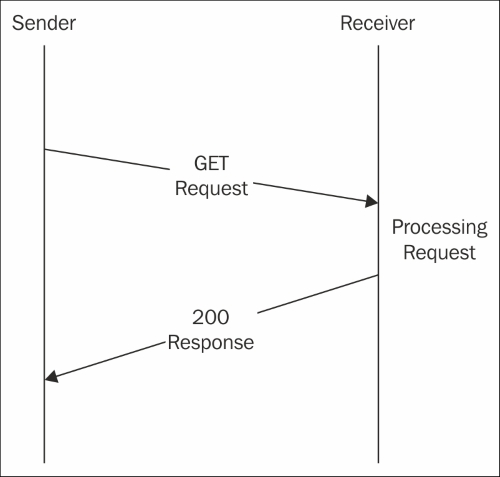If you check the RFC2068 standard at https://tools.ietf.org/html/rfc2068, you will see that its description is almost endless. Luckily, what you need to know about this protocol, at least for starters, is way shorter.
HTTP stands for HyperText Transfer Protocol. As any other protocol, the goal is to allow two entities or nodes to communicate with each other. In order to achieve this, the messages need to be formatted in a way that they both understand, and the entities must follow some pre-established rules.
The following diagram shows a very basic interchange of messages:

A simple GET request
Do not worry if you do not understand all the elements in this diagram; we will describe them shortly. In this representation, there are two entities: sender and receiver. The sender sends a message to the receiver. This message, which starts the communication, is called the request. In this case, the message is a GET request. The receiver receives the message, processes...



